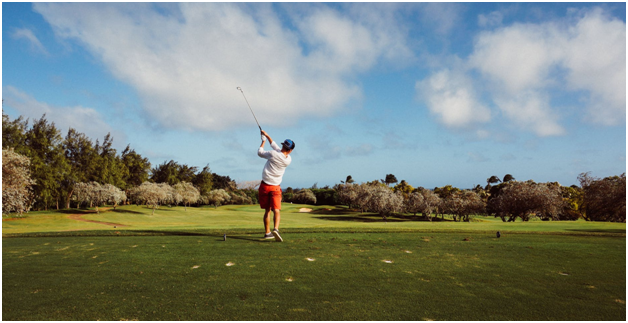The Finer Points of Golf Shafts for Sale
Posted by Dallas Golf on 05 Aug 2020

Once you have been golfing or practicing for any appreciable amount of time, you will come to realize that golf shafts, like everything in the sport, are precision engineering to offer very specific performance. Golf balls are carefully manufactured to provide a consistent, even, balance core and weight for reliable performance. Some club heads contain weights that can be shifted around to improve the performance of a swing and the resulting effects.
There is no happy accident in golf, and manufacturers of golfing equipment take great pains to provide precision equipment that delivers exactly as it promises. Golf shafts, like club heads, golf balls, and everything else in the game, are no different.
While at first glance it might appear that a golf shaft is one of the more forgettable pieces of a player’s repertoire of equipment, this could not be further from the truth. There is a wealth of fine detail that goes into the design and construction of golf shafts that can and does impact their performance significantly.
Here are some of the things to look out for before you go shopping for golf shafts for sale . Keep these factors in mind while you are shopping, and when you get a chance at a range or a course - or visit us in-store - swing some clubs with these different shaft features to see which ones appeal most to you. You’ll find that your game is ever-evolving.
Material
The first thing and one of the most important to look out for is the material from which the shaft is made, as this will subsequently impact the performance of the shaft. Overall, it may provide the most significant impact on performance, as the material will influence the flexibility, kick-point, and weight of the shaft, among other things.
Steel
Steel shafts were once more commonly used than they are today, and some of the stiffest shafts out there today are made from steel. Steel shafts are commonly made in two varieties, being stepped steel shafts and rifle steel shafts.
Stepped shafts are shafts that appear to have ridges or “steps” that encircle the shaft at intervals, whereas rifle steel shafts are smooth and lack these aforementioned steps.

Advantages and Disadvantages
When it comes to steel shafts, there are several distinct advantages and disadvantages that accompany their use. In the first place, a steel shaft can be made much stiffer than a graphite shaft, which means that players with higher swing speeds may find that they can hit the ball harder and farther with stiff steel shafts. At the same time, steel shafts present almost no degree of torque or twisting that similar graphite shafts can offer, making them more precise and more accurate, in the right hands.
Some players, especially more experienced players with a higher swing speed, can appreciate this about steel. A note on the ability of manufacturers to produce very stiff shafts; stepped steel shafts offer a consistent stiffness throughout the shaft, whereas rifle steel shafts may have areas that flex more than others.
Steel shafts also provide a lot of feedback to the player through the shaft, which can be both a blessing and a curse. On the one hand, steel shafts will give the player some immediate insight into their swing and how they connected with the ball, how high or low or far forward or back. At the same time, for learners, this feedback might be considered painful, especially on inaccurate strokes or on swings that hit the turf and produce a divot.
One more thing to mention is the fact that steel shafts can be produced more cheaply than graphite shafts and therefore are desirable to some players for that very reason. As they are also literally made of steel, they are very strong and are much tougher than equivalent graphite shafts. Also being made of steel, they will be heavier than similar graphite shafts.
Graphite
In addition to steel golf shafts for sale, there are also graphite shafts, which are not only newer but offer their own suite of strengths and weaknesses. Graphite, made of a crystalline structure of carbon, is not only very light but fairly strong, and advances in engineering can make shaft manufacturers capable of producing shafts that offer a diverse range of features and performance.
Advantages and Disadvantages
Making graphite shafts for golf clubs is a newer practice, but because they can be manufactured to such a wide range of specifications, they are extremely popular, not only with learners but with some professionals.
Graphite golf shafts can be manufactured to be very flexible or relatively stiff. Because they can be made more flexible, learners and those with slower swing speeds might prefer some graphite shafts that fit their swing better and enable them to hit the golf ball higher and further. This makes it possible to manufacture graphite shafts that are basically custom made for a wide range of different types of players with even more diverse abilities.
Graphite shafts are also significantly lighter than steel shafts, which some players might appreciate as it has the potential to enable them to generate higher swing speed. It could be argued that a lighter shaft will induce less fatigue while playing or practicing, but that is hardly anyone’s first inclination when picking out a graphite shaft.
At the same time, graphite shafts are significantly more costly to manufacture than steel shafts, which can make them undesirable to some, considering the performance that they promise to offer. Additionally, graphite shafts, due to the nature of the material, are much more fragile and require much more care and maintenance than steel shafts. Steel is nigh indestructible, but graphite is fragile; it can crack, splinter, separate, or even fray under stress.
One more thing to consider is that because graphite can be made more flexible than steel, some players who do not appreciate the feel of steel’s feedback will like the more ‘softened’ feel of graphite. By the same token, other golfers might feel the experience as ‘deadening’ and shy away from it.
Multimaterial Shafts - Strengths and Weaknesses

Multimaterial shafts are relatively new players on the market and are an attempt to capitalize on, and share, the strengths of both steel and graphite. Usually, shafts like this include portions that are made from both steel and graphite, usually a graphite tip. This gives the shaft extra strength and durability but enables the tip to have a little more flex to give players who need a little more forgiveness to accommodate their lower swing speeds and advantage.
Flex or Stiffness
Aside from the aforementioned advantages and disadvantages that we have previously covered in graphite and steel, the second more important trait that will impact your swing and your performance is the flex or stiffness of the shaft.
Manufacturers all have their own stiffness ratings, so there is no universally accepted way to gauge this, but you are likely to see stiffness ratings ranging from extra stiff (XS), stiff (S), firm (F) and regular (R), although some manufacturers also create stiffnesses that are designated as senior (S), amateur (A) and ladies (L). The stiffnesses of these latter three are on the more flexible side.
The question that remains, then, is why you would want to be able to make a golf shaft that is more or less flexible when you can get all of the benefits of steel shafts that we already mentioned. The main reason that you might want to consider a more flexible shaft is because a more flexible shaft can be much more accommodating of those with slower swing speeds, and can enable them to hit the ball higher or farther than they would be able to do with a heavier, stiffer steel shaft.
There are also some players who will appreciate the fact that a more flexible shaft doesn’t provide feedback as sharp as stiffer shafts offer, but that is another matter altogether.
Flex Point
Flex point is the point at which the shaft will noticeably bend when pressure or force is applied to is. If the shaft has a high flex point (also sometimes called a kick point) then it will be harder to notice the flexibility of the shaft. High kick points will enable you to give the ball a noticeably lower trajectory.
By contrast, a lower kick point is a point that is closer to the club head and is more noticeably felt. A lower kick point will enable you to hit the ball along a higher trajectory, which may equate to longer distances, but this is not universally the case.
Flex point or kick point is tied directly to the stiffness of the shaft, and what you like in a shaft will be a product of your personal preference. Some players prefer lower kick points and some prefer higher kick points. One thing you may notice, however, is that if you prefer a stiffer shaft, you may prefer a higher kick point because it will not be as apparent through the swing.
Torque
Shaft torque is similar to flex but not the same and refers to the amount by which a shaft will rotate around itself if it is twisted. Usually, this is measured in degrees, so a torque rating of 3 indicates a shaft that will rotate 3 degrees, and a torque rating of 5 indicates a shaft that will rotate by 5 degrees.
Most steel shafts have very small torque ratings that are almost unnoticeable, and the higher the torque rating of the shaft, the softer or more flexible it will feel. Torque doesn’t necessarily impact performance too sharply, although some players will not like the softened feeling of a shaft with a higher torque rating. Additionally, torque can have a small impact on the flight trajectory of the ball.
Weight
We don’t need to get too into weight and it is self-explanatory; steel shafts weigh more than graphite shafts that are otherwise equivalent. The main effect this can have on your performance is that a lighter shaft can enable you to generate a higher club head speed through the swing; in that event, you might be someone to prefer a graphite shaft.
Length
Length, like weight, is somewhat self-explanatory, although length cannot be tied to the material from which a shaft is constructed. The length of a shaft, however, can and will have a profound effect on your abilities as a player.
You can’t just pick up a shaft and fit it to a club, nor can you just “feel” it out and guess what length is appropriate for you. The truth is, you may even need different shaft lengths for different clubs, given how they are used, with or without a tee, and how you want to contact the ball.
For these purposes, you should work with a professional to have your measurements taken. You can come into our store and take advantage of our Club Fitting Services, whereby a professional will take your measurements, observe your swing, and help you determine exactly what you need in a club. If you are an online customer, you can take us up on our Online Shaft Fitting Tool to help you find proper recommendations.
Why It Matters
Regardless of whether you are an amateur just testing out the waters or you are a seasoned professional who fully understands the effects of these factors on your performance, the shafts you use will affect your performance as a player.
All of these factors that we have investigated here will impact your swing speed, your comfort, and your ability to accurately and precisely hit the ball. They will even affect your range. If you want to learn more about some of the golf shafts for sale that you can find on our website or in our store, give us a call at 800-955-9550 today. We’d even be glad to go more in-depth into how the different types of golf shafts and their features will affect your performance.
